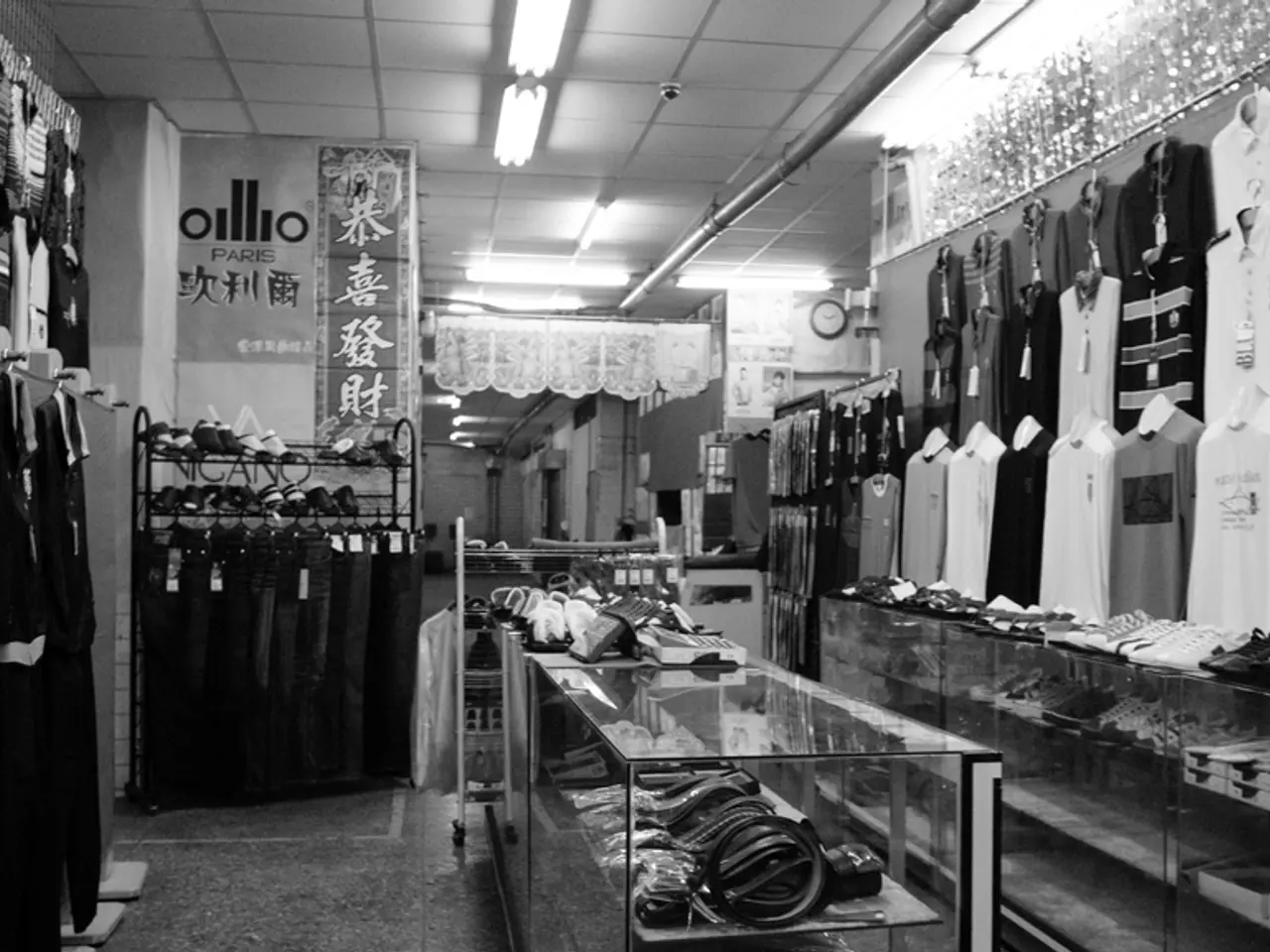Transforming Fashion Industry Through Blockchain Technology: An Overview
The world of fashion is undergoing a significant transformation, and at the heart of this change is Blockchain technology. This revolutionary technology is not just a fad but a prime force shaping the future of the fashion industry.
Arianee protocol, a product certification and communication mode, is one such example of Blockchain's application. It bridges the gap between the owner and the brand behind an item, ensuring a secure and transparent connection.
One of the key benefits of Blockchain in fashion is enhanced transparency and traceability. By tracking a garment’s journey from raw materials to the final product in real time, Blockchain provides immutable proof of ethical sourcing and production conditions. This empowers brands and consumers to verify claims such as Fair Trade certifications or sustainable material use, preventing false information.
Counterfeit reduction is another significant advantage. By assigning unique digital identities or Non-Fungible Tokens (NFTs) to physical items, Blockchain helps authenticate products and combat the $98 billion counterfeit fashion market. Embedded chips or smart labels record every manufacturing step, enabling customers to confirm authenticity and reject fakes.
Blockchain's transparent data flow also supports sustainable fashion by verifying labor conditions, carbon footprint, and ethical sourcing. Smart contracts can enforce payments or bonuses only upon meeting ethical criteria, encouraging responsible production practices.
Digital Product Passports and Circular Economy models are also being explored. Digital IDs or NFTs extend beyond sale to cover repairs, resale, recycling, and product end-of-life. This enables innovations like automatic rewards for returning garments for recycling, branded resale royalty systems, and promotes circular fashion.
Emerging models like Decentralized Physical Infrastructure Networks (DePINs) are enhancing data reliability and robustness without centralized control. Reverse Logistics and Recycling are also being facilitated through Blockchain combined with intelligent tagging (QR codes, RFID) and AI sorting systems. Gamified consumer incentives for circular behaviors are helping move beyond the wasteful fashion model toward sustainable consumption.
Brands such as PANGAIA, Sheep Inc., Armedangels, and luxury brand ba&sh are already implementing these benefits, using digital passports for transparency, sustainability, and authenticity assurance. Hugo Boss is also exploring Blockchain-based use cases for tracking their goods in the supply chain.
Incorporating Blockchain correctly can help fashion brands validate their focus on sustainability and quality, while maintaining margins and revenues. It makes it convenient to track royalty payments, allowing designers to develop an unchangeable proof of creation and track trademarks, license designs, and royalty programs.
To get started with Blockchain in the apparel industry, a fashion brand should identify goals and needs, decide the level of trust, select a Blockchain platform, and work on the app frontend and UI. Contacting a top blockchain development company in the USA can aid in becoming a leader in the Blockchain-powered, digitally transformed supply chain ecosystem.
Blockchain apparel technology helps customers understand the complexity of bringing a product to the market, changing their perception of value, and reducing the quantity of products thrown out within a year of usage. The technology is used to bring transparency in the fashion industry supply chains, ensuring a more ethical and circular industry for all stakeholders.
- The flexible combination of lifestyle, fashion-and-beauty, and technology is revolutionizing the fashion industry, with Blockchain technology at the forefront, serving as a crucial tool for enhancing transparency and traceability in product sourcing and production.
- To ensure authenticity, sustainability, and transparency in fashion, forward-thinking brands are adopting Blockchain technology to create digital product passports and facilitate a circular economy, opening opportunities for rewards for recycling, resale royalty systems, and a shift towards sustainable consumption.




